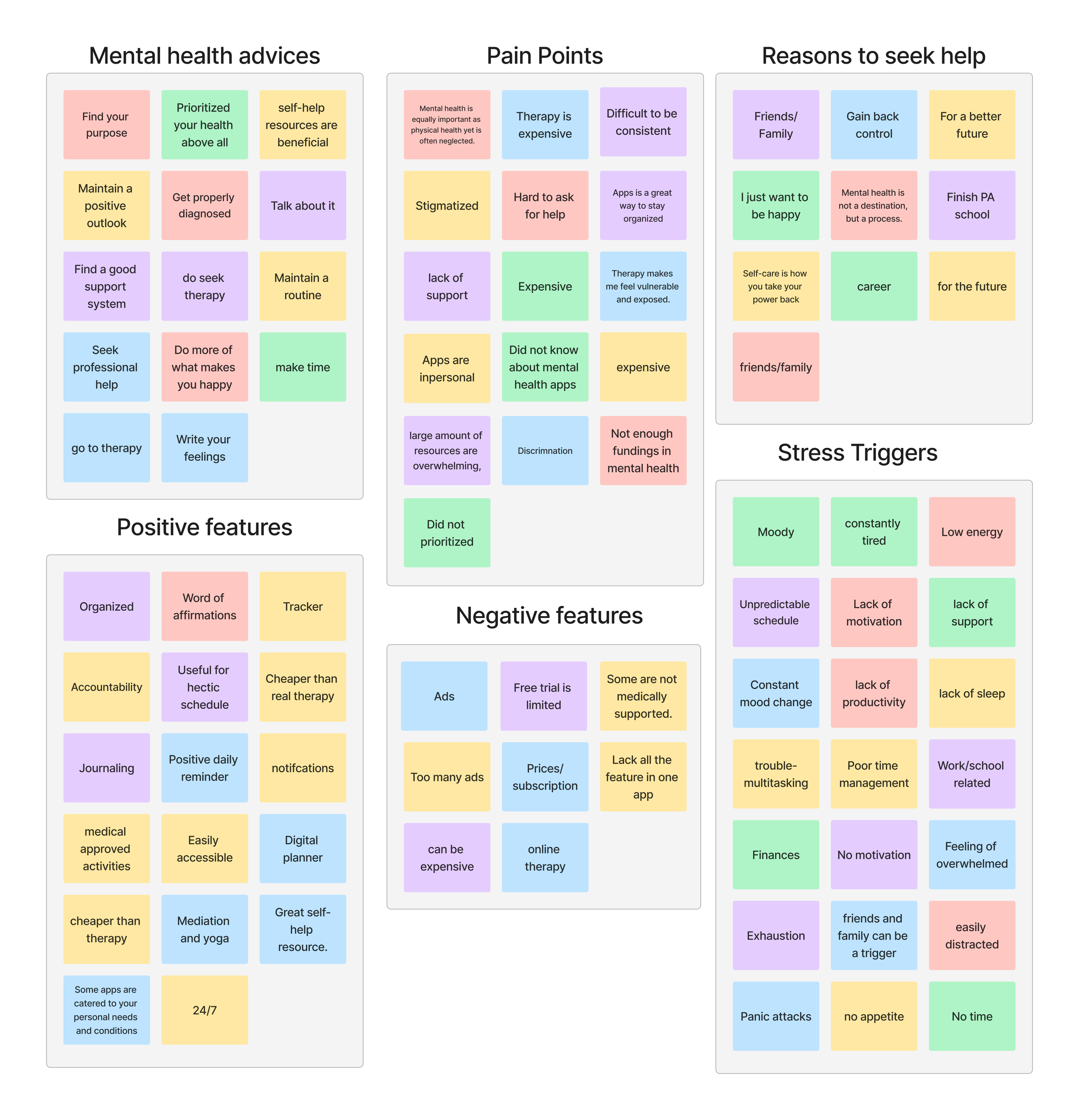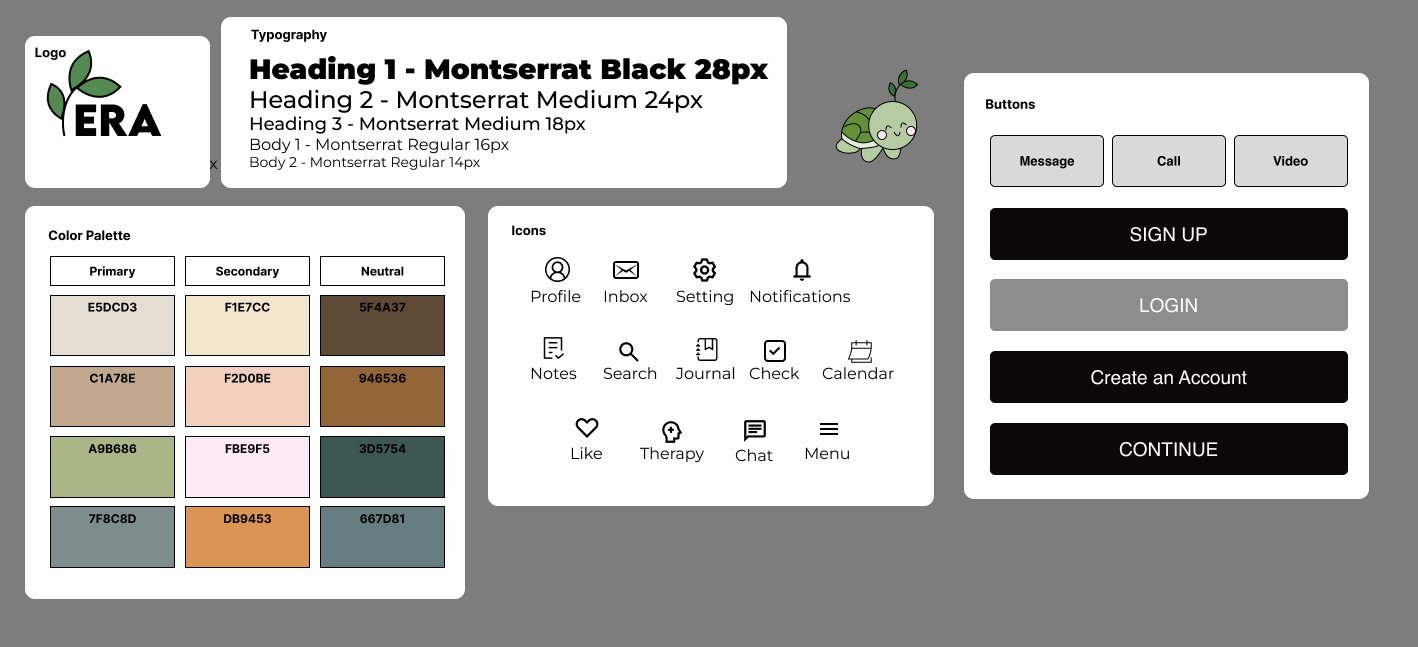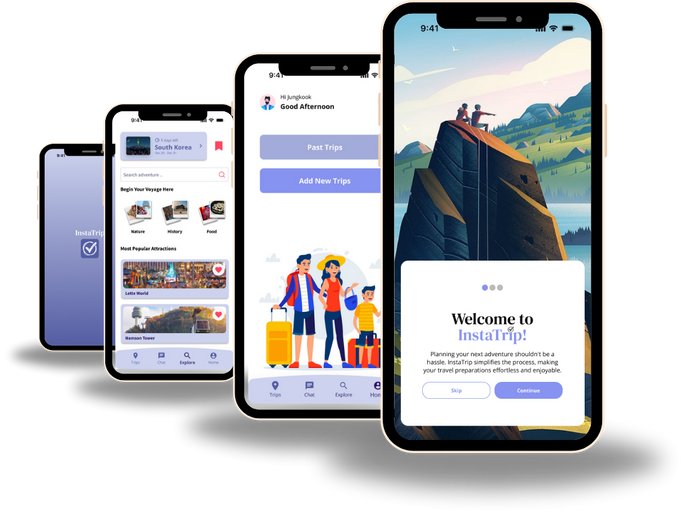Responsive layout for a customized self-help platform catering to individuals facing mental health challenges, enabling them to seamlessly browse and book online therapy sessions, chronicle their progress via journalism, and connect with a supportive community for comfort and encouragement.
ERA
Project type
Product design
Responsive design
User Research
Project Role
Product designer
User Researcher
Duration
12 weeks
UNDERSTAND
Project overview
Era offers a platform for individuals to find online therapy options, engage in thorough journalism, and participate in a supportive community environment focused on mental health understanding and mutual support.
Problem
Regrettably, within our society, mental health remains a stigmatized subject, particularly among students and young professionals. Managing and addressing mental health concerns can incur significant expenses and demand considerable time and effort.
Goals:
Our aim is to create a platform that enhances therapy accessibility, providing strong support mechanisms and fostering user accountability. It will serve as a secure space where users can confidentially share their journey, both privately and publicly, ensuring a safe environment for expression and growth.
RESEARCH
In-depth research and understanding
In an effort to grasp the users' needs more thoroughly, I undertook a competitive analysis and conducted user interviews with those who might efficiently utilize this platform.
User interviews explored openness to therapy, reasons for not seeking therapy, interest in journaling, and willingness to seek help when necessary.
During the user interviews, a distinct theme emerged among the participants. My research revealed that all participants recognized the necessity of mental health assistance and expressed a preference for therapy. However, they cited limited resources, including cost, time constraints, and lack of access, as significant barriers.
A competitive analysis was conducted on other platforms with similar concepts to identify successful and less successful features.
Several platforms share a similar concept to ERA, including BetterHelp, Happify, Moodkit, and Headspace. Each offers a range of features, garnering both positive and negative feedback. BetterHelp emerges as a direct competitor to ERA. However, user feedback suggests that while some positive reviews exist, users struggle with long-term commitment and consistency due to the platform's high cost.
Feature prioritization roadmap based on participant feedback.
Utilizing this feature roadmap, I narrowed down the prioritized features that should be implemented and focused on primarily during the creation of ERA.
BRANDING
Mood boards are crucial for exploring and refining the visual concept of the platform.
WHAT IS ERA?
ERA is a groundbreaking platform crafted to offer affordable and easily accessible therapy to individuals navigating life's challenges. Inspired by the ever-changing nature of existence, I chose the name "Era" to symbolize the stages or "eras" we pass through in life. Our goal is to guide users through difficult periods, towards healing and growth. The logo, a minimalist depiction of a turtle with a distinctive spout atop its shell, embodies longevity and resilience. Like turtles, we mature and adapt within our shells, and the spout represents growth and renewal. Maintaining a clean, earthy aesthetic throughout the platform, with tones of green symbolizing growth and positivity, we strive to create a welcoming space for personal transformation and healing.
IDEATION
Guiding HMW’S
“ How might we we utilize a digital platform to offer cost-effective and readily available counseling services to individuals facing mental health challenges?”
“How might we integrate beneficial functionalities like journaling, mood tracking, and support group outreach into this digital platform to enhance users' online therapy experiences and advance their healing journeys?”
Preliminary sketches and concepts for layouts and navigation to essential pages.
PROTOTYPE
USABILITY TESTING
To evaluate the usability of my designs, I conducted thorough usability tests and gathered feedback from the same participants I initially interviewed.
Participants were tasked with navigating the prototype through three specific assignments:
1. Onboarding; Signing and creating an account
2. Search and schedule a therapy session
3. Create a Diary post within the Journal.
Navigation proved to be straightforward and intuitive, enabling all participants to efficiently complete all three tasks with minimal issues. However, there are areas for potential refinement.
Feedback regarding the therapy booking feature included suggestions to:
Align available doctor booking times more effectively with their availability.
Improve readability of the time slots.
Adjust the calendar alignment for better usability.
Suggestions for improving the journal entry feature involved:
Considering a switch from a weekly to a monthly calendar view.
Ensuring consistency in style and color of the save button.
Providing clarity on icon usage and refining it in the prototype.
Exploring the addition of an option to upload custom backgrounds for enhanced personalization.














